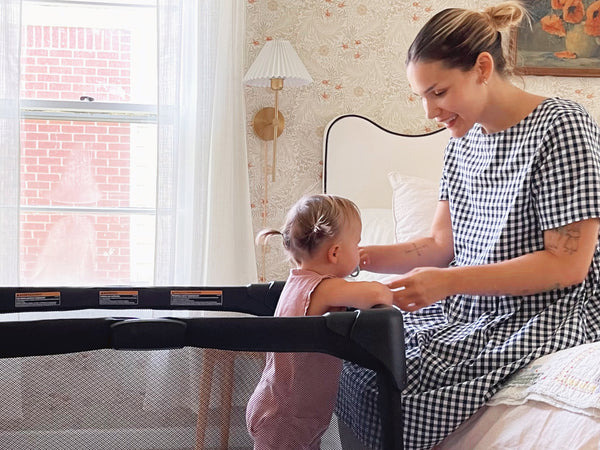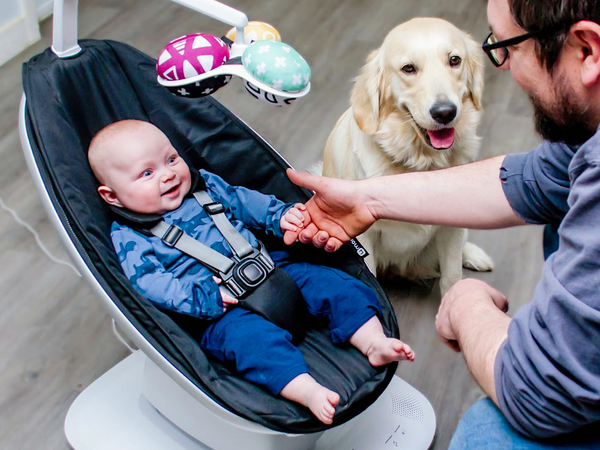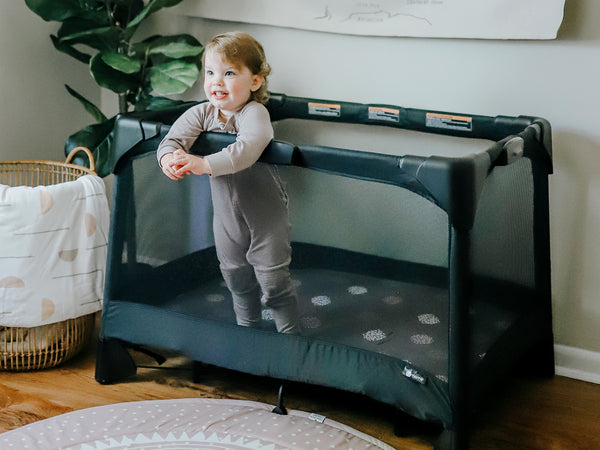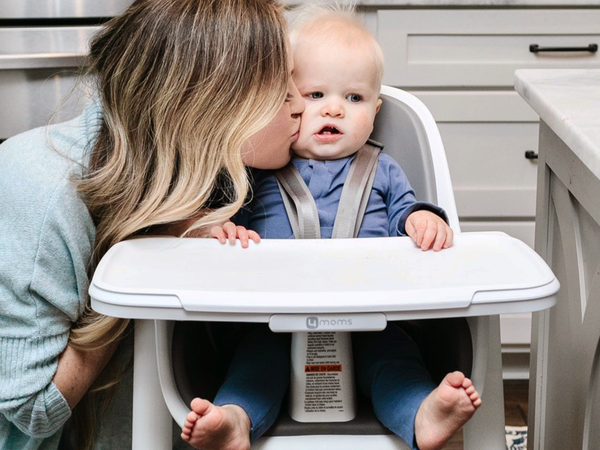Bassinet vs. Crib: How to Make the Right Choice for Your Baby
There are so many decisions to be made about how to handle your baby’s sleep. Will you sleep train or not? Use a pacifier? Choose a crib or a bassinet for the first weeks at home?
If you’re not even sure where to start with the bassinet or crib question, read on. There are some very real differences between bassinets and cribs—and both have very real benefits. Let’s take a look at the pros and cons of each:
Bassinets:
Bassinets are small, portable sleep spaces that can easily be moved from room to room. With their small footprint, they’re ideal for setting up in your bedroom so you can keep your baby close by while you both sleep. It’s also easy to pull a bassinet up to the side of your bed for nighttime feedings. Some newer bassinets even have built-in sound and motion to rock your baby to sleep and help them sleep longer.
The only real drawback? Bassinets have a limited span of use: once your baby can sit up or roll over on their own, it’s time to move him or her to a crib.
Cribs:
Cribs are typically the centerpiece of your baby’s nursery. They’re very sturdy and most have tall, slatted sides to keep your baby safe in their own room. A crib can be used from birth until your baby can crawl out of it—and you can even choose a crib that converts to a toddler bed and a full-size bed.
The cons? Cribs are large and solid, so many couples lack the space to have a crib in their bedroom. They are also heavier than bassinets and much more difficult to move from room to room.
Why Use Both a Crib and Bassinet?
If you’re trying to cut back on the amount of baby gear you need, passing on a bassinet might seem like a good option. After all, your baby can sleep in his or her crib starting at birth. Why spend money on a bassinet?
Although bassinet use is limited to the first four to six months of your baby’s life, they provide so much function as a safe sleep space that they are a must-have for new parents.
The American Association of Pediatrics (AAP) recommends that newborns sleep in the same room as their parents, but in a separate sleeping space, until they are six months of age. Compact, portable bassinets are ideal for creating a dedicated sleeping spot for your baby in your room, Some bassinets even mimic the safety and comfort of the womb with soothing motions and sounds.
Transitioning from Bassinet to Crib
Once your baby can push up on their hands and knees—typically around 4 to 6 months—it’s time to move them into a crib. To ease the transition, you can start by moving the bassinet into your baby’s nursery to get them used to sleeping through the night in their own room and start using the crib for naptimes or short sleep breaks.
If your bassinet played white noise to calm your baby, try playing the sounds while your baby is in his or her crib. And if your baby really struggles with the change, you may want to consider setting their crib up in your bedroom for a few weeks and then trying again to make the move to the nursery.
What to Look for in a Bassinet or Crib
When you’re shopping for cribs and bassinets, the first and most important feature is quality: you want a sleeping space that is sturdy, stable, and breathable and that complies with the standards of the Consumer Product Safety Commission (CPSC).
When choosing a bassinet, test how easy it is to set up and move around, and consider the features very carefully. Many newer bassinets are equipped with sound and motion that can soothe your baby and help them fall asleep faster and stay asleep. With cribs, determine if you want a traditional crib or a convertible crib that can grow with your baby from crib, to toddler bed, to day bed or full-size bed.
Safe Sleep Practices
Regardless of whether you’re putting your baby to sleep in a bassinet or crib, remember to always lay your baby down on their back, use a tight-fitting sheet on the mattress, and keep baby bedding, blankets, stuffed animals, or any other items out of your baby’s sleeping area.
And most importantly, at the end of the day, remember that there’s no right or wrong answer to the question of crib, bassinet, or both. Cribs and bassinets both provide safe and secure places for your baby to sleep, so—as long as your baby is not yet sitting up or rolling over—use the option that allows your baby (and you!) to get the most consecutive, quality sleep, and feel good about your decision.

















